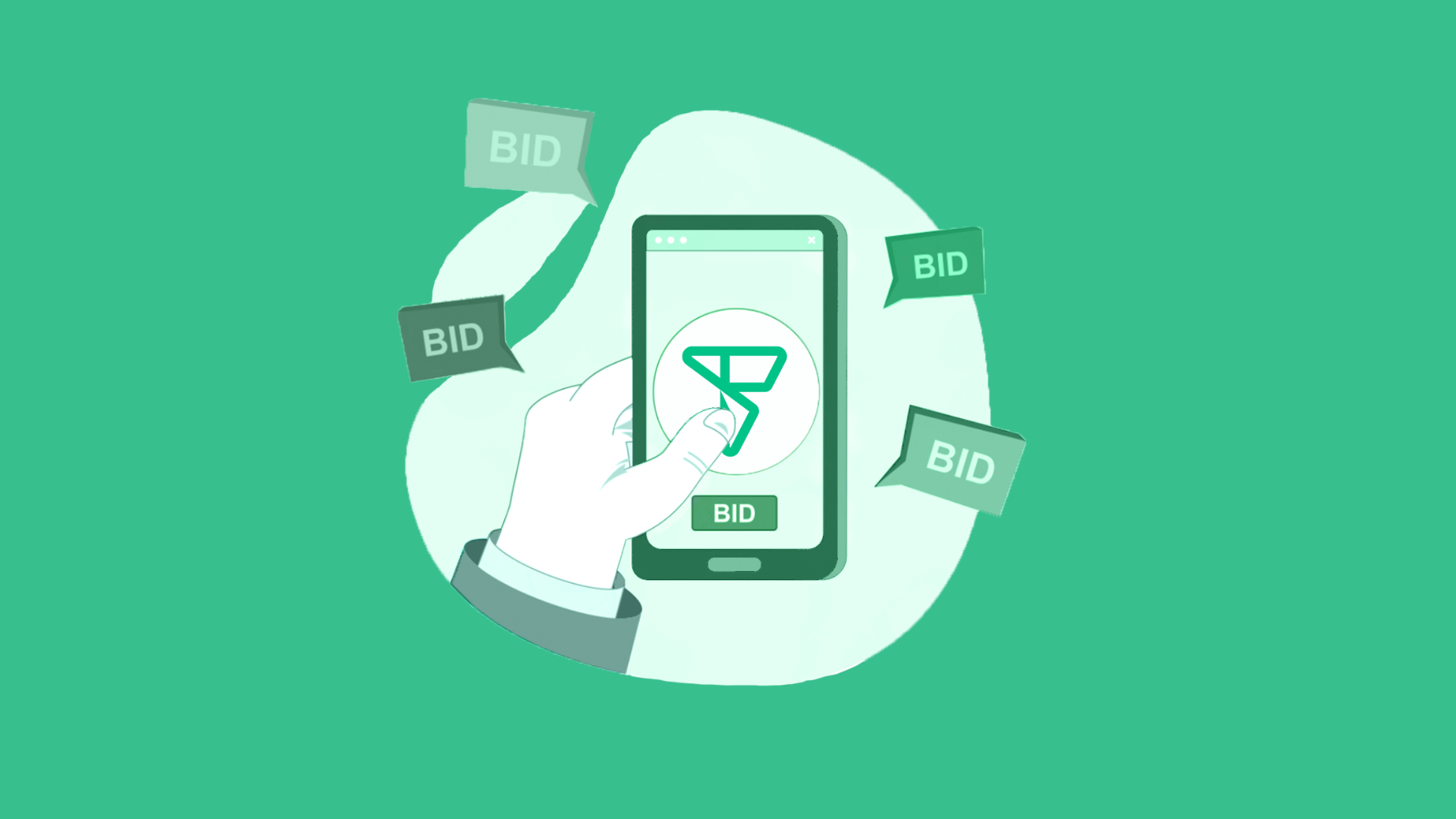There are tons of key performance indicators (KPIs) out there for measuring app performance. We could easily run you through a list of the best KPIs for mobile apps, however, a ‘best of’ list wouldn’t necessarily be accurate.
Why?
Because not all KPIs will apply to every in-app scenario — nor are they of equal importance for each app owner or app marketer.
App marketers and owners alike rely on in-app purchases, advertising, upgrades, and subscriptions for their monetization needs. However, they tend to ignore the finer points of data analytics. For example, which users are worth holding onto or which monetization methods need improvement.
So, which KPIs and strategies for measuring your mobile app’s performance should you focus on?
Let’s discuss.
Mobile App Benchmarking 101
Before we can jump into the KPIs you’ll want to focus on, it’s important to understand what exactly it is you’ll want to measure. This is known as mobile app benchmarking, and it’s characterized as the process by which you would compare your own mobile app’s performance compared to others of a similar function and size.
Ultimately, the goal is to improve your app’s performance so that it not only rivals the competition but surpasses them. Mobile benchmarking will look different for everyone, but it will always consist of selecting the competitor apps you want to make comparisons with and using a few specific KPIs such as the following:
- Downloads
- Daily active users (DAU)
- Monthly active users (MAU)
- Retention revenue
- Session length
- Average session per DAU
- Lifetime value (LTV)
Essentially, mobile benchmarking allows you to set your own performance standards (benchmarks) for your app. If your app is performing below the market standard, then you know there’s room for improvement whereas if the performance is above your standards, then you can use this information as motivation to double down on the activities that are driving your app’s success.
Your benchmarks are what will keep you and your mobile app on track, starting with how you want your app to perform. Once you have something to compare your app to, your KPIs are how you will measure that performance moving forward.
The KPIs You Want to Focus on For Mobile App Performance Success
So, above we listed some common KPIs you’d want to use alongside your benchmarks to monitor and improve upon your mobile app’s performance. However, the list of KPIs you want to pay attention to for optimal mobile app performance is a bit longer.
We’ve categorized KPIs by engagement and monetization. Engagement metrics give you an opportunity to improve user experience and proactively avoid churn whereas monetization metrics help to understand how effectively you are monetizing your app. The following are the KPIs that matter the most when it comes to owning and maintaining a successful mobile app:
Engagement KPIs
Monthly Active Users (MAUs)
Understanding how many MAUs you have is one of the best ways to gain insight into what your audience looks like when they engage with your app.
The MAU KPI looks a bit different for everyone as it depends on what you consider to be ‘user activity’. For example, if a user logs in to your app at least once over a 30-day time period, this would count as a measurable MAU.
More importantly, it’s best to think of MAU as a directional signal since a user can fail to engage with your app in a meaningful way despite logging in or not coming back to use it until a month later. Therefore, keeping an eye on the rise and fall of your MAU count can give you a general sense of whether your acquisition and retention efforts are successful.
Daily Active Users (DAUs)
Understanding your MAUs is important, as it’s a reflection of your acquisition and retention efforts. However, knowing how many people are engaging with your mobile app each day is even more important.
This is because your daily active users refer to the people using your mobile app on an individual basis — not the number of login sessions. You can also calculate your DAU for specific days to get a better understanding of what exactly your users were doing or looking for. This will allow you to better serve them and their needs in the future.
Daily Sessions Per DAU
Once you get a picture of how many users are engaging with your mobile app each day, you can narrow down the data even further by taking a look at how many times per day users are accessing your app. This will give you a more nuanced view of your audience’s daily habits concerning your mobile app as it reflects on your desired level of user activity as a business.
To calculate daily sessions, you’ll first need to have tracked your DAUs. From there, you would just divide the number of daily active sessions by the number of daily active users for the same day.

Average Session Length
Session length is a pretty straightforward KPI. It measures how much time users are spending on your app on average per session. In simpler terms, it’s how long a user has your app open and how long they’re actually engaging with it versus simply having it open in the background.
You can calculate your average user session length by dividing the total amount of time spent in your mobile app by the total number of users logged in during a given time frame.

Stickiness
Your daily sessions per DAU can provide you with micro-level insights into repeat user activity. Stickiness, on the other hand, expands on this insight by offering you a monthly perspective. Stickiness is a critical KPI because it’s the metric that lets you know how engaged and likely your audience is to stick around — hence the name.
To calculate your app’s stickiness, divide your DAU by your MAU. The closer the two KPIs are to each other, the more effective your mobile app is at getting users to come back over and over again.

Retention Rate
User retention is arguably the most important KPI for mobile marketers and app owners. After all, users won’t engage with your app if they’re no longer using it. Therefore, understanding if and when churn is happening is your first step towards reducing it to ensure that you keep as much of your audience coming back.
There are several ways to define retention. One of the most efficient ways is to consider range retention, which compares the number of users from the previous weeks, months, or other date range against the next appropriate date range. This will allow you to see how many users continue to return to your app and engage with it over certain time frames.
To calculate your range retention rate, all you have to do is divide the number of users from your time frame of choice — let’s say one month — and divide it by the number of users that engaged with your app continuously the month before that. From there, you can see how your retention rate varies over the course of a few months.

Churn Rate
While your retention rate paints a picture of how many loyal users you have, your churn rate can show you how many users have stopped using your app. Essentially, your churn rate is your user loss rate.
To calculate churn rate, all you have to do is subtract the number of users you have at the end of a given time frame from the beginning.

Monetization KPIs
Cost Per Acquisition (CPA)
Whether you’re running an app or a brand awareness campaign, one of the main goals is to continue acquiring new customers. Of course, customer acquisition requires a certain amount of monetary investment, which is why it’s helpful to understand how much is being spent to acquire each new user. This way, you’ll know whether or not you’re budgeting correctly for this type of event.
To get your CPA, just divide the costs associated with your last campaign by the number of acquisitions that took place throughout its course. Do this for every mobile app marketing campaign so you can compare the relative impact of each one so you can manage your marketing spend more efficiently.

Average Revenue Per DAU
Getting users to download and use your mobile app is only part of the battle. The next step of the process is to turn those users into value — specifically, revenue generation.
You can think of your app as a tip jar. Every time your user interacts with you in-app monetization model (ex. views an ad, purchases a subscription, etc.), you receive a tip which adds up to your app’s revenue over time. ARPDAU helps you understand how well your app is generating revenue. By revenue, we are talking monetization generated from ads, subscriptions or/and In-App Purhcases (IAP).
ARPDAU is calculated by dividing Daily Income by Daily Active Users.

Customer Lifetime Value (LTV)
This is another KPI that will look different for everyone. Overall, LTV will help you determine your brand’s customer relationship based on how much value can be generated by the average user over the length of time they spend as a customer. The better the relationship, the more you’re getting out of your acquisition costs.
To determine your LTV, take the ARPDAU and multiply it by lifetime. To calculate the average user’s lifetime, you can look at retention rate and incorporate that into your calculations. Lifetime may differ based on how an app defines and tracks user lifetime.As more time passes, you’ll have even more valuable data to measure for your KPIs. Don’t expect to get the best view of your mobile app performance within just a few months. It takes time to gather valuable information that you can build upon to make your mobile app a success.

Return on Investment (ROI)
ROI is the holy grail of KPIs across all industries and marketing efforts. Understanding how much value is generated per campaign compared to how much was spent on it is the very key to future mobile app marketing strategies.
However, there are a lot of variables involved, which can make calculating your ROI a bit tricky. The most important thing to remember is that when calculating your ROI, there needs to be an internal alignment on what’s being valued and what the investment costs were for it to make sense. We recommend publishers focus on ARPDAU, LTV, and CPA to calculate the ROI for marketing campaigns of their app. Using these metrics can help you determine if your app is revenue efficient. For example, if your LTV is lower than your CPA, your app is unprofitable because you have a negative return on your investment. These metrics can help you improve your business model and become more profitable.
Key Takeaways
If you have an app, monitoring your KPIs are important to improve your app’s performance. These are the KPIs you should be monitoring regularly:
- Engagement KPIs
- Monthly Active Users
- Daily Active Users
- Retention Rate
- Churn Rate
- Stickiness
- Average Session Length
- Monetization KPIs
- Average Revenue per DAU
- Cost Per Acquisition
- Customer Lifetime Value
- Return on Investment
There’s always time for improvement and the opportunity to address these KPIs. Other performance metrics to consider are uninstalls, ad latency, app load time, crashes, ratings, reviews, etc.
As more time passes, you’ll have even more valuable data to measure for your KPIs. Don’t expect to get the best view of your mobile app performance within just a few months. It takes time to gather valuable information that you can build upon to make your mobile app a success.




